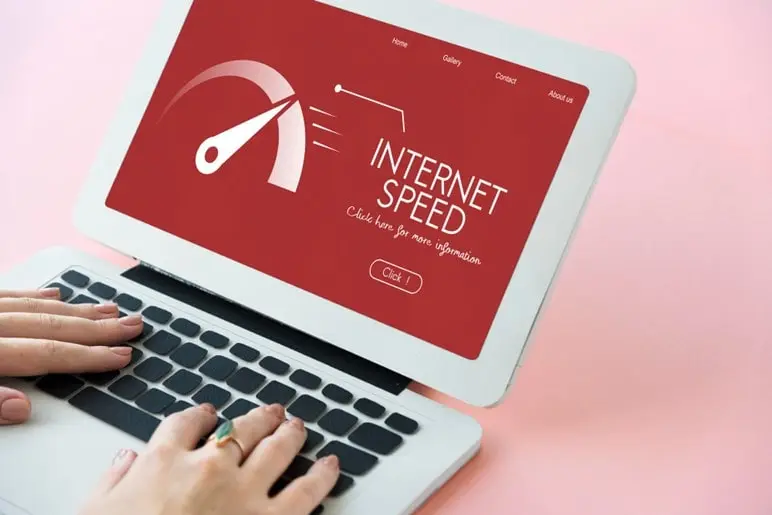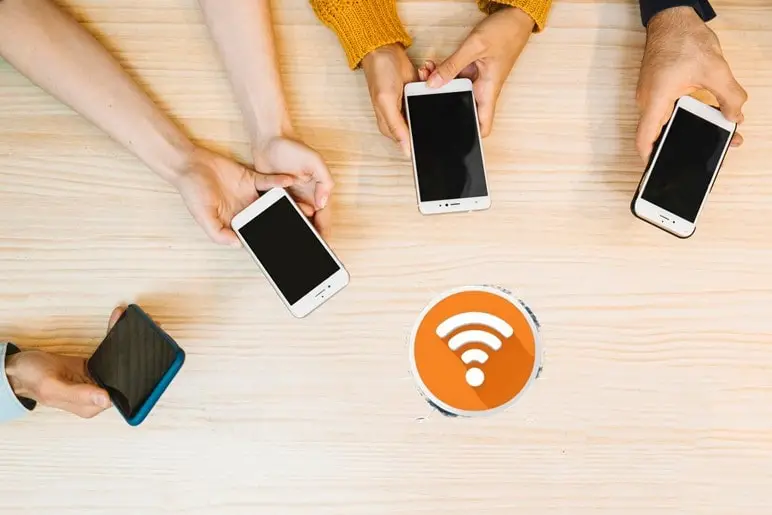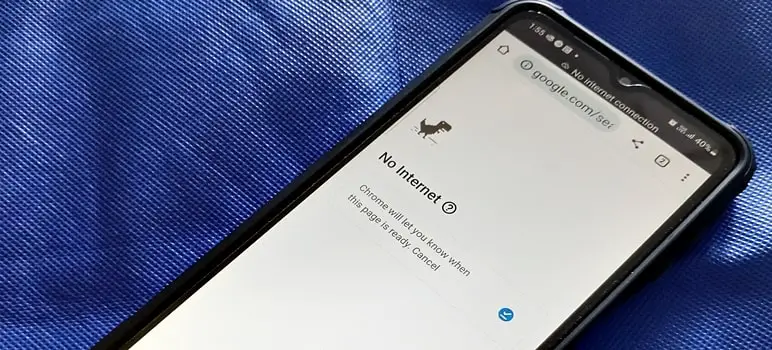In an age where digital connectivity is a fundamental part of our everyday lives, understanding the intricacies of internet connectivity poses as an essential skill. This comprehensive guide serves as an enlightening exploration into the world of hotspot connections and why they may not always offer internet access, in spite of being seemingly connected. We will dive into the nitty-gritty of internet connection issues, delve into the process of troubleshooting device settings, dissect the concept of network diagnostics, and finally, understand how to manage your hotspot device.
Understanding Internet Connection Issues
Understanding Different Internet Connections: WiFi, Mobile Data, and Hotspots
Unlike WiFi which relies on a physical infrastructure (such as cable or DSL) to deliver internet connection, Mobile Data functions on cellular networks. It primarily depends on the coverage area of your mobile service provider. Internet Hotspots, on the other hand, function as a repeater or extender of connection. They typically consist of a physical device (like a mobile phone or a standalone hotspot gadget) that taps into a source, whether it’s your home internet or a mobile data plan, and redistribute this connection to other devices.
Troubleshooting WiFi Internet Connection
Problems with WiFi internet connection may arise from a variety of sources, including physical obstructions, distance from the router, or interferences from other electrical devices. Having too many connected devices can also strain your bandwidth, leading to slower internet speeds. Additionally, issues with your Internet Service Provider (ISP), such as network congestion or service interruptions, might affect your WiFi connection.
Understanding Mobile Data Connection Issues
A strong mobile data connection depends largely on your proximity to cellular towers, and issues could arise when you’re in a remote area, within a building or underground. Moreover, exceeding your data plan limit could also result in slower internet speeds or disconnection. Some cellular providers may also throttle or intentionally reduce your internet speed during peak usage times.
Deciphering Hotspot Connectivity Issues
While connected to a hotspot, there are several reasons why you might lose your internet connection. Hotspot devices essentially split and share bandwidth openly with connected devices. Overloading the hotspot with too many connected devices may result in slow internet speeds or disconnection. Similarly, if the hotspot device is operating on mobile data, bad signal reception or exhausting your data limit can cause internet issues.
Hardware issues with the Hotspot device itself or the connected devices could also contribute to the problem. Irregular software updates, incorrect network settings, and physical damage could disrupt the communication between your device and the hotspot, hence, interrupting the internet connection.
How to Resolve Hotspot Connectivity Issues
Firstly, confirm that the problem originates from the hotspot connection by testing the internet on different devices. Try disconnecting and reconnecting your device to the hotspot or reboot the device itself. Ensure that the hotspot has enough data allowance (if it’s running on a data plan) or has a strong signal strength (if it’s a WiFi hotspot). Always keep the software in your device up-to-date and regularly check for any necessary hardware repairs. If the problem persists, contact tech support or your service provider for further assistance.

Troubleshooting Device Settings
Understanding Your Device’s Internet Settings
Whether you’re using a smartphone, a tablet, or a laptop, your device has a set of Internet settings that dictate how it connects to the web. It’s in these settings that you can turn on a portable Wi-Fi hotspot, allowing other devices to use your device’s Internet connection. However, if your hotspot connection has no Internet, the issue could lie within these settings.
Checking Basic Connection Settings
Firstly, you need to ensure your device’s primary connection to the Internet is active. For this, check whether your device’s Wi-Fi and/or mobile data are turned on. If you can connect to the Internet through your device but not through the hotspot, this might not be the issue, but it’s a reason to double-check.
Inspecting Flight Mode Settings
Airplane mode or flight mode is a setting that turns off all the wireless communications of your device. If this mode is accidentally enabled, it could be interrupting your internet connection. Check your device settings to ensure the airplane mode is toggled off.
Verifying Data Limit Settings
Data limits in the settings menu help control data usage by setting a certain cap restricting the device from consuming data beyond the set limit. If your device has reached the limit you set, it could interfere with your hotspot function. You can adjust or remove this limit in your Internet settings.
Scrutinizing VPN Settings
Virtual Private Networks, or VPNs, are tools that create secure connections to the Internet. However, if you’re using a VPN, it can sometimes interfere with your Internet connection. You might need to disable the VPN while you’re using your hotspot.
Examining Hotspot Settings
The hotspot settings may also influence your internet connectivity. For instance, if the maximum device limit is reached, a device may not be able to connect. Or the hotspot settings may have been configured to restrict access to certain devices.
Final Checks: ISP and Software Updates
Check with your Internet Service Provider (ISP) to ensure that your current service plan supports hotspot features. Some carriers may limit this feature or it may be subject to data usage rules. Finally, ensure your device is updated to the latest version of its operating system. An outdated system might be causing the issues with the hotspot. You can check for updates in your device’s system settings.
By carefully examining your device’s settings, you can potentially fix any issues causing your hotspot to connect without offering Internet access. Regularly understanding these different settings will prepare you to troubleshoot connectivity issues efficiently.

Network Diagnostics and Solutions
Understanding Network Diagnostic Tools for Hotspot Connection Issues
Network diagnostics tools are software that help analyze, monitor, and fix network-related issues. Some of the popular network diagnostic tools include ping, traceroute, telnet, nslookup, and speedtest. These are integrated into most operating systems, including Windows, Mac, Linux, and mobile OS like Android and iOS.
The Ping tool is one of the most common tools used to troubleshoot internet connectivity issues. It works by sending small data packets to the target site to check if the site is reachable. If the site responds, the internet connection is working fine.
The Traceroute tool traces the path that your data takes to reach the destination server from your device. It can help identify if there are any hops along the route where data is being lost or delayed.
Speedtest is a tool that measures the data speed between your device and an external server. It can help identify if your connection speed is slower than it should be.
Common Solutions for Hotspot Connectivity Issues
Once you’ve identified that there’s a problem with your hotspot connectivity, there are several steps you can take to resolve these issues.
1. Restart Your Device and Hotspot
Simple software glitches can interfere with your internet connection. Often times, these glitches can be resolved by performing a restart on the device that’s connected to the hotspot and the device providing the hotspot.
2. Check for Network Congestion
Network congestion may cause slow internet speeds or intermittent connectivity. You can check if other devices are heavily using your network and causing congestion by accessing your hotspot’s settings. If you find that your network is congested, disconnect unnecessary devices or limit their bandwidth usage.
3. Verify Hotspot Settings
Ensure that your hotspot device or smartphone has the correct APN settings. Check the network mode, and if available, switch between 3G, 4G, or 5G modes to see if that resolves the problem. Additionally, consider resetting network settings to default and reconnecting the hotspot.
4. Use Compatible Devices
If you are facing issues with a specific device, try connecting other devices to the hotspot. If they can access the internet successfully, the problem likely lies with the original device’s compatibility.
5. Update Device Software
Updating your device’s software can often fix bugs that interfere with internet connectivity. This applies both to the device using the hotspot and the device providing the hotspot.
6. Disable VPN or Proxy
VPN and proxy services can sometimes interfere with internet connectivity. If you’re using a VPN or proxy, try disabling it to see if this resolves your issue.
7. Manage Data Consumption
Monitor your data usage regularly to avoid reaching your data limit. Some smartphones offer built-in data usage trackers, or you can use third-party apps for this purpose. Consider upgrading to a higher data plan if your current plan frequently reaches its limit.
8. Forget the WiFi network
Try this on the problematic devices. Then, reconnect to it. Sometimes, altered information can cause “mobile hotspot connected but no Internet access” issues.
9. Contact Your Service Provider
If the above solutions don’t work, there might be a problem with your network. Contact your service provider for further assistance.
While hotspot connectivity issues can be frustrating, understanding how to utilize network diagnostic tools and knowing what steps to take to fix common issues can save you substantial time and hassle.
Read also: Having WiFi Connection but No Internet: Why and How to Fix

Hotspot Device Management
Understanding Hotspot Device Management
The process of managing and troubleshooting a hotspot device that’s connected but not providing internet access can be handled through a series of methods, including software updates, restart protocols and understanding the potential limitations of the device.
Software Updates
Ensure your hotspot device is up-to-date with its software. Hotspot devices, like any other tech gadgets, require regular updates to function optimally. These updates often include bug fixes and improvements that can resolve common connectivity issues. Check the manufacturer’s website or the settings of the device to see if there are any pending software updates.
Device Restart Protocols
Restarting your hotspot device could also be a solution to the no-internet problem. Sometimes, continuous usage of the device can lead to overloaded memory or other minor glitches that affect performance. To restart your hotspot device, turn it off, wait for about a minute and then turn it back on. In some cases, you may need to remove the battery, if the device has one, wait for a few seconds, and then reinsert it.
Understanding The Limitations of The Hotspot Device
It’s important to understand the limitations of your device. Some hotspot devices have a limited number of devices they can support. If you’ve reached this limit, you may have connectivity issues. Furthermore, the strength of your hotspot’s connection can depend on your location and the signal strength of your mobile network. Areas with weak or no cellular reception will weaken your hotspot’s ability to provide internet access. If you’re in such a location, consider relocating to a place with better signals.
Lastly, be aware of data limitations. Some service providers may place data caps or reduce speeds after you’ve consumed a certain amount of data in a billing cycle. If you’re near or have exceeded this limit, it may affect your internet access. Always consult your service provider about any existing data caps or speed reductions.
By understanding and implementing these management steps, you can potentially resolve issues with your hotspot device when it’s connected but there’s no internet access.

Conclusion
With the expanded knowledge gained from this guide, you are better equipped to manage your hotspot connections and troubleshoot any issues that may arise. Whether you’re dealing with device settings that may be interfering with your connection, or looking to resolve potential challenges with your Hotspot device, this guide equips you with the knowledge and power to stay connected. Beyond just being a user, you can now stand as a competent troubleshooter of your digital world, turning potential frustrations into victories in connectivity.
FAQs (Frequently Asked Questions)
Q: Why is my hotspot connected but showing no internet access?
A: This issue could be due to network congestion, misconfigured settings, device compatibility, data limit exhaustion, or a service provider outage.
Q: How do I fix my hotspot connected but no internet on my computer?
A: Try these steps to resolve the issue:
- Restart your computer and the hotspot device.
- Verify that the hotspot is providing internet access on other devices.
- Check your computer’s Wi-Fi settings and ensure it’s connected to the correct hotspot network.
- Disable and re-enable the Wi-Fi adapter on your computer.
- Reset the network settings on your computer if necessary.
- Update your Wi-Fi adapter drivers.
- If possible, test the hotspot with a different computer to rule out any hardware issues.
Q: How can I check if my hotspot settings are correct?
A: Verify the Access Point Name (APN) settings on your hotspot device or smartphone. Ensure the network mode is appropriate, and try resetting network settings if needed.
Q: Why does internet access work on some devices but not others?
A: Certain devices may not be fully compatible with the hotspot’s network. Check for firmware updates, drivers, or hardware limitations on the specific device facing connectivity issues.
Q: What should I do during a service provider outage?
A: Check your service provider’s website or contact their customer support to confirm if there’s an outage in your area. You’ll need to wait until they restore the service.
Q: How can I manage my data consumption to avoid reaching the limit?
A: Monitor your data usage regularly using built-in smartphone data trackers or third-party apps. Consider upgrading to a higher data plan if you frequently reach the limit.

